|
What's the Hindustani name for these bracelets?
This priceless family heirloom was shown to us by my sister's friends when we visited their home. The pair of bracelets were an inheritance from the gentleman's great grandmother who was of East Indian descent , her parents having come from India. My sister Ann begged to hold these historical artifacts in her hands just for a moment. Let's see which members can identify this piece of jewelry and the part of the body it was worn. According to my sister they were quite heavy . Pity that these family heirlooms can no longer be kept by family members but have to be hidden away in safety deposit boxes in a bank maybe to be taken out by another generation to follow.
1 Comment
An eyewitness account of the 1937 Labour Riots in Trinidad.
I remember it like it was yesterday. The air was thick with the smell of burning petrol, the cries of anger, and the promise of change. I was twenty-five years old, a young man working the oil fields in Fyzabad. The discontent that had been simmering for years finally erupted into the madness of 1937. The oil fields were our lifeblood and our chains. For generations, men like me toiled under the relentless sun, drilling for black gold that enriched foreign hands while we lived in squalor. Our lives were a cycle of labour and poverty, with no end in sight. The colonial masters and local overseers held all the power, and we had none. But something was changing. The whispers of discontent grew louder, and the spark was lit by one man—Tubal Uriah "Buzz" Butler. Butler was a man of fire and brimstone, his speeches ignited the hope that had long been dormant in our hearts. He spoke of justice, of fair wages, of a future where our children would not be bound by the same chains. On June 19th, a gathering was called in Fyzabad. Hundreds of us, workers from all over Trinidad, assembled to hear Butler speak. The air was electric with anticipation. As Butler's voice rang out, calling for a strike, a unified cry of agreement rose from the crowd. It was the first time I felt the true power of solidarity. But the colonial authorities were not blind to our gathering storm. They saw Butler as a threat, a trigger that could ignite a full-blown rebellion. As we marched through the streets, demanding our rights, the police confronted us, their guns and batons raised. The clash was inevitable. I remember the chaos, the sounds of struggle, and the first shot fired. It was like a dam had burst. I saw friends fall, blood staining the earth, but I also saw courage. Men and women who had been beaten down for so long stood tall and fought back. We were no longer silent; our voices rose in unison against the oppression. In the midst of the riot, I found myself alongside Elma Francois, a woman whose passion for justice matched Butler's. Her presence was a beacon, her words a rallying cry. "We fight for our future!" she shouted, her voice cutting through the noise. Inspired, I fought harder, my anger transforming into a determined force. The days that followed were a blur of strikes, protests, and clashes with the authorities. The news of our struggle spread like wildfire across Trinidad, and soon, the entire island was gripped by the spirit of resistance. The colonial government, faced with unprecedented unrest, had no choice but to negotiate. It wasn't an easy victory, and it didn't come without a cost. Lives were lost, and even more were injured. Butler and Francois faced imprisonment, but their sacrifice was not in vain. The riots led to significant changes in labour laws and the formation of trade unions, giving workers like me a voice we had long been denied. Now, as I look back on that time period, I feel a mix of pride and sorrow. Pride for what we achieved, and sorrow for those who didn't live to see the fruits of our struggle. Labour Day in Trinidad is more than a public holiday; it's a reminder of our resilience, our unity, and the enduring spirit of the people. Every year, when June 19th comes around, I tell my grandchildren the story of the Labour Riots. I want them to know that the rights we enjoy today were not given, but earned through sweat, blood, and unwavering determination. The flame of 1937 still burns within me, and it is my sincere hope that it kindles one within you. An excerpt from the personal collection of Joseph Crawford (1987) (Source: Sanfernando Community North Library, June 19, 2024) One of the best known names in Caribbean literature, Sam Selvon, was born on May 20th in 1923!
As an author, Selvon is celebrated for his vivid depictions of Caribbean life and stories of West Indian migration. Many of his later writings drew from his experiences as a member of the Windrush generation of Caribbean immigrants to Britain in the 1950s. His book, “The Lonely Londoners” (1956) is still recognized as one of the first novels to incorporate Caribbean dialects in its telling of working-class migrant life in the UK. Over the years, Selvon authored a number of books, including “Ways of Sunlight” (1957), “Those Who Eat the Cascadura” (1972) and “Moses Ascending” (1975). In 1976, he co-wrote the screenplay for British film “Pressure” with Horace Ové, celebrated as the UK's first Black dramatic feature-length film. He was a two-time winner of the prestigious Guggenheim Fellowship, a recipient of the Hummingbird Medal (Gold, 1969) and the Chaconia Medal (posthumously, 1994). In the 1980s, Selvon was honoured with degrees from the University of the West Indies (1985) and Warwick University (1989). Born in San Fernando, Selvon attended Naparima College before serving 5 years in the West Indian Royal Navy (R.N.V.R) during WWII, on ships in the Caribbean. After the War, Selvon worked as a reporter at the Trinidad Guardian Newspaper (1945-1950). He also wrote stories under pseudonyms and had some of his work broadcast by the BBC. Encouraged by this success, he migrated to the UK in 1950 with the manuscript of his first book “A Brighter Sun” (1952). In London, Selvon worked several jobs, while his short stories were published by various British magazines. He also produced two television scripts for the BBC: “Anansi the Spider Man” and “Home Sweet India.” Selvon later moved to Canada, where he became a fellow at the University of Dundee, and a professor in creative writing at the University of Victoria. He passed away on April 16th 1994 in Trinidad. In 2018, on what would have been his 95th birthday, Selvon was honoured by Google with a “Google Doodle”. This photo is courtesy of the Sunday Guardian newspaper, May 5th 1963, and is part of the National Archives of Trinidad and Tobago Newspaper Collection. (Source: National Archives of T&T, May 20, 2024) AND THEY BROUGHT WITH THEM THEIR TRADITIONAL ART OF JEWELLRY MAKING FROM THEIR MOTHER COUNTRY6/10/2024 Indian Sonars ( Jewelers) were well known in Trinidad during and after the indentureship period. Sonar or Sunar (also spelled Suniar) is from the Sanskrit suvarnakar, meaning worker in gold. The Sonars were master gold and silversmiths craftsmen. They designed and made jewellery that were elaborately designed and inlaid with precious and semi-precious stones.
They brought their traditional gift of the art of making delicate filigree jewellery designs from their mother country of India. The East Indian Sonars went into the villages and sugar estates transacting business among the plantation workers and would use humble abode at seen in one of the attached vintage photos to set up their shop and display their items of jewellery. Jewellery produced by these master craftsmen during this period included the Khanpul (earrings), nakphul ( nose – rings) , chanahar ( necklace) ,churi ( bracelets) and bera. For the East Indian women wearing of gold and silver jewellery was not only part of their ancestral tradition but it helped the East Indian women who traditionally had no say in things, to have financial security. (Source: Virtual Museum of T&T, May 20, 2024)  THE EAST INDIAN BELLE. Credit to author Angelo Bissessarsingh On 30th May , 2024 , the nation celebrates the 179th anniversary of Indian Arrival. While it is a time for much grandiose exhibition and soliloquy, it would be well to look back on the largely neglected role of the Indian woman in the trials of arrival. During the era of immigration (1845-1917) women were far fewer than men. Thus the Indian woman became a possession to be aggressively defended which sadly enough, resulted in frequent episodes of wife-murder wherein husbands who suspected their wives of infidelity punished the hapless spouses with swipe of a sharpened cutlass. The frail beauty of the Indian woman gripped the fascination of men (including photographers who considered them to be of rare exotic appeal) in general exposing them to unwanted attentions especially from white planters and overseers. Not a few became mistresses of the planters, often against their wills. One such enchanted master of the 1890s wrote: "Strolling along the shady side of a wide and busy street, I overtook a young girl. I should have passed her had I not slackened my gait when I came within a few steps of her, and, walking softly, measuring my paces with hers, followed behind the unknown wayfarer respectfully and at a proper distance to study and admire her costume, which was so neatly fitted to her slight and charming figure, so tastefully disposed, draped in such dainty folds and graceful gatherings, that the wearer of it made a most attractive picture. Her little feet were bare; nevertheless, she trod firmly, stepping lightly, with graceful poise. In time, I made a mental catalogue of her appearance from which an ingenious artist could paint a full-length picture of her. I noticed that her teeth were regular and white, mouth small and regular, lips full and pouting; head gracefully poised, face oval, Grecian in type; nose delicate, straight, finely chiseled; ears small, well shaped, and well put on ; hair glossy, raven-black, straight and long, braided carefully with dexterous fingers, and tied at the ends with orange ribbons ; hands small and covered with rings” The delicate Indian belle was sacrificed in Trinidad to a lifetime of toil in the cane - fields where burdens were heavy only to be followed by domestic tasks. Many were child-brides, wed in an ancient tradition to men who were often old enough to be their fathers. Those who married men of wealth dispensed with the simple, chaste garb of white cotton which they had worn for generations for heavy silver bangles and gold coin haikal- these being the public status symbol. Educational opportunities were few until the coming of the Presbyterian Church’s Canadian Mission to the Indians. There was no voice which spoke for the Indo-Trinidadian woman. Nevertheless, the indomitable spirit of womanhood persevered and these were the mothers who raised generations of children who suckled on the milk of self-denial to rise beyond the cane -fields and form a people which is now both economically secure and socially uplifted. East Indian Woman, painting by Rudolph Bissessarsingh (Source: Virtual Museum of T&T, May 27, 2024) THE GODNA WALLAS ( TATTOO MAKERS)
The East Indian Immigrants who came from India to work as indentured Labourers possessed a variety of highly specialized skills that were part of their Cultural Legacy. There were the tattoo - makers or GODNA WALLAS who roamed the villages and estates announcing their arrival by using a small hoorka to make a rattling sound while shouting out " Aray!Aray! Suno! GODNA WALLA awela La tayyar Hoja!" Which when translated mean " Listen ! Listen !the Tattoo Maker is coming , be prepared!". Tattoos or traditional body art has been practiced for centuries in many Indian communities and Godna ( the art of pricking the flesh with needles dipped in ink ) is one such tradition of body tattooing. Tattoo designs were etched on the arms and hands of newly wed brides. The popular designs of tattoos are geometric shapes and patterns as well as celestial objects such as the sun and the moon. The popular belief among the practitioners of the art form is that, unlike jewellery, the body continues to remain adorned with godna even after death For married persons it is said that if both the husband and wife tattooed three dots on their necks, after death they will meet together in heaven. Legend also has it that Pundits and elderly men would accept food and water only from Godna tattooed married women However, the practice gradually lost its cultural meaning. You can read more about this topic in this link https://mapacademy.io/article/godna/ Source: (Patricia Bissessarsingh, Virtual Museum of Trinidad & Tobago, May 28, 2024) Stacey Sobers, centre, plays Calypso Rose in Queen of The Road - The Calypso Rose Musical which was staged at Central Bank Auditorium, Port of Spain, May 10-12. - Photo courtesy Carlyle Morris NIGEL A CAMPBELL
Yes Productions, this past Mother’s Day weekend, presented Queen of the Road: The Calypso Rose Musical to a packed house at the Central Bank Auditorium, delivering another example of national theatre grounded in the ethos of Carnival, and in this case, thankfully, elevated above the many examples of low production value and “uneven quality” of Best Village drama. It was an evening of light entertainment in which the musical biography runs counter to the hyper-produced West End or Broadway experience like Tina –The Tina Turner Musical or Get Up, Stand Up The Bob Marley Musical, but follows a local path defined previously by director and playwright Rhoma Spencer’s own Bassman (Shadow) in 1995, and later by Zeno Constance’s The Road Make To Walk (Lord Kitchener) in 2003. The musical had been in development for a while, and advanced significantly at the University of Toronto as part of Spencer’s 2022-23 Artist-in-Residence at the Queer and Trans Research Lab there. According to the lab’s website, “Spencer had been working since 2019 on a jukebox musical based on the life of queer Caribbean icon and ‘undisputed Calypso Queen of the world,’ Linda McCartha Monica Sandy-Lewis, popularly known as Calypso Rose.” The jukebox musical in four acts that attempts, within the scope and breadth of just over 40 calypsoes by Rose, to elaborate on her life, and career growth and development. Spencer makes no excuses in insisting that the Best Village model was her preferred model for this musical: “I make no apology for situating (the production) in the original Trinbago Musical Theatre style – Best Village.” She has said previously that, “the best village competition was called ‘illegitimate theatre,” but that she “continued to crave the illegitimacy, a feeling that has inspired her whole career.” It worked here, with effective production and direction making song, dance, actress, and story gel smartly. Rose’s story, from childhood to adult, is told as a flashback sequence as she won the Victoire de la Musique award in 2017, the French equivalent to the Grammy. The descriptive above, “light entertainment,” does not eschew the fact that the musical covers important facets of Rose’s life and career that resonate still today. Act I touches on the family dynamics of the rural, ultra-religious family with many offspring. Rose was from a family of 13 brothers and sisters, and was obligingly “adopted” by her uncle and aunt in Trinidad, to ease the tension. Her lifelong connection to her Spiritual Baptist grandmother, in the flesh and later in spirit, guides Rose’s growth and is a notable constant throughout the musical. Young actress Thara Howe takes on the role of pre-teen Rose with admirable confidence and ability, and succeeded in upstaging everyone with her excellent stagecraft. Hopefully, to be seen in future productions. Act II sees a young adult Calypso Rose (Stacey Sobers) at Original Young Brigade Tent led by the Mighty Sparrow (Kearn Samuel) dealing with the misogyny and oft-expected hypersexuality of the machismo culture of calypso in the late 1960s and early 1970s when her career began to blossom. Her musical pushback via wickedly double entendre calypsoes like Banana and Sweet Pudding Man (1968), and Palet (1969) – the sweetness, and give and take of orality – came at a price as she was labelled by the church, women’s groups and the local newspapers of the time as the “Queen of Slackness” and “Queen of Smut.” Her sexuality was challenged in this era too, with Sparrow and others questioning “why she don’t have a man.” Coy, prissy or faint-hearted were not adjectives to describe Rose in this period. She knew what she wanted, and demanded it. Respect was earned. Stacey Sobers is a revelation as an actor. Already known as a singer and calypsonian – 2018 National Women’s Action Committee (NWAC) National calypso queen and NCC Calypso Monarch finalist – she embodies Rose’s Tobago accent and stutter, and her body language effectively. Gordon Rohlehr wrote in 2004 that “Rose’s prolonged wailing mode of delivery, a possible inheritance from her Spiritual Baptist/Shouter roots, has now become the signature style of a significant number of current female soca singers.” That timbre and performance style are replicated almost to perfection. Act II sees Rose’s rise to the top with Road March and Calypso Monarch wins in the mid-to-late 1970s effectively ending the Sparrow-Kitchener dyad that ruled calypso at the time. That resulted in jealousy, and migration to greener pastures up the islands as she now had to navigate not only the narrow silo of a Carnival season, but the increased hostility towards her dominance over a significant number of male calypsonians. Her connection to Belize and Andy Palacio, and Garifuna culture including punta are explored, and that Belizean connection would prove to be fortuitous as her 2017 comeback award-winning album Far From Home would be produced by Belize-based producer Ivan Duran. Act IV set in the 2010s, 30 years after Act III, sees her embrace by the world and especially, the French, towards relative calypso immortality that sees the decline of those major calypsonians who started their careers in the 1960s-70s. The musical exposes the wide oeuvre of Calypso Rose, and challenged the audience to recognise that there is more to Rose than Fire in Your Wire. Rose is a Caribbean Queen. The ease of the sing-along to a few calypsoes was a plus. Audiences should listen to our calypsonians’ canon in full to give an earned response. One step at a time. The musical accompaniment directed by Michelle Henry was excellent, with optimum sound reinforcement that made the Central Bank Auditorium an apt calypso tent without jarring volumes. The technical aspect of the musical were handled with slickness that showed an improvement over reported opening night issues. Blocking, and movement on the stage, up and down and expanded into the aisles of the auditorium, and the set design including projection screens as backgrounds that established Rose’s Tobago home, her Trinidad home, and the wider space for school, the Original Young Brigade calypso tent, the yard, and performance stages in France and Coachella Festival gave the musical a lift above the memories of the simple folk theatre of yesteryear. Ovations were given to the two Rose leads, and deservedly so. This play can and should be workshopped to iron out the kinks in production, and to enhance the quality of singing so necessary for any musical. Local validation is secure, and one assumes that this is a story for the world to discover. Queen of the Road: The Calypso Rose Musical, is an example of the style and quality of play, and by extension, calypso musical that can become a trope that makes sense in our creative industries, as it looks outward for validation and commercial expansion. (Source: Newsday, May 14, 2024) Today’s #wcw is the first woman captain of BWIA, Captain Wendy Yawching! She is also the first Trinidadian woman that hiked to the Mt. Everest Base Camp in the Himalayas!
Born on September 5th, 1955 in San Fernando, she grew up in Port of Spain with her family. It was there that she decided at the age of 10 to become a pilot. Though she faced criticism that aviation was a job solely for men, she was undeterred, and nevertheless pursued her passions, becoming a flight attendant and migrating to Canada to study, where she was finally able to pursue her dream of becoming a pilot by the age of 31. Her first role was as a commercial pilot for LIAT in 1986, followed by a position in 1988 at BWIA as a First Officer. The BWIA (British West Indian Airways) was the former national airline of Trinidad and Tobago and the predecessor of what we know today as Caribbean Airlines Limited (CAL). There, she rose through the ranks to eventually emerge as a Captain on the B737-800. After the airline’s closure in 2006, she flew with Caribbean Airlines as Captain of the B737-800 fleet until her retirement in 2014. No stranger to forging her own path in life, Yawching is also a skilled explorer, having hiked to the Mt. Everest Base Camp in the Himalayas, at an altitude of over 5,000 metres, in addition to the Swiss Alps. In 2022, she published her memoir, “The Courage to Fly”, describing her journey towards self-empowerment, and becoming Trinidad and Tobago’s first Feng Shui consultant. This photograph is courtesy of the book, “Why Not a Woman?” compiled by Radhica Saith and is part of the National Archives of Trinidad & Tobago Reference Collection. References: Mathur, Ira. “Yawching to Women: You Too Can Fly!” Trinidad and Tobago Guardian, 15 Oct. 2023. (Source: National Archives of Trinidad and Tobago, May 15, 2024) . A RECORD THAT WILL NEVER BE BROKEN THE 1ST BLACK MISS UNIVERSE AND THE 1ST BLACK MR. UNIVERSE WERE BOTH BORN IN TRINIDAD AND TOBAGO.
(Source: T&T Golden Memories, April 2, 2024) |
T&T news blogThe intent of this blog is to bring some news from home and other fun items. If you enjoy what you read, please leave us a comment.. Archives
May 2025
Categories
All
|
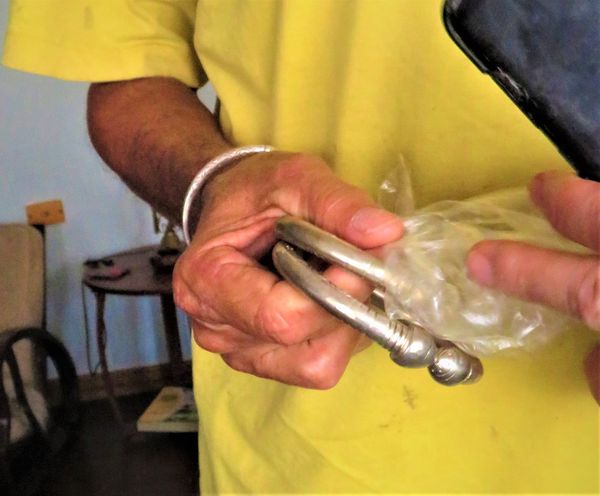
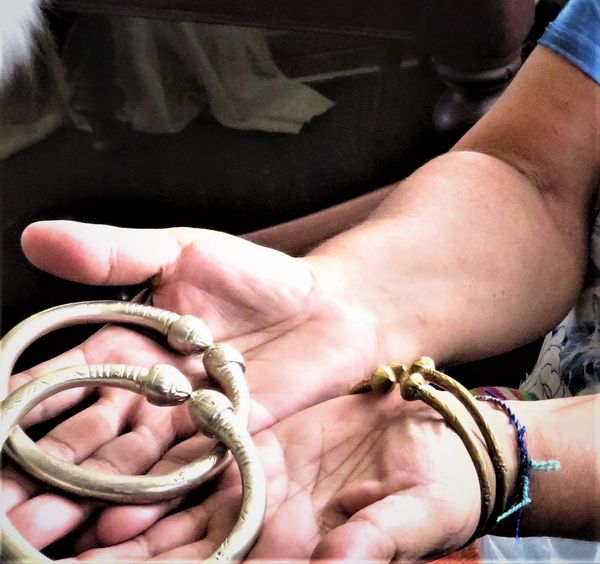
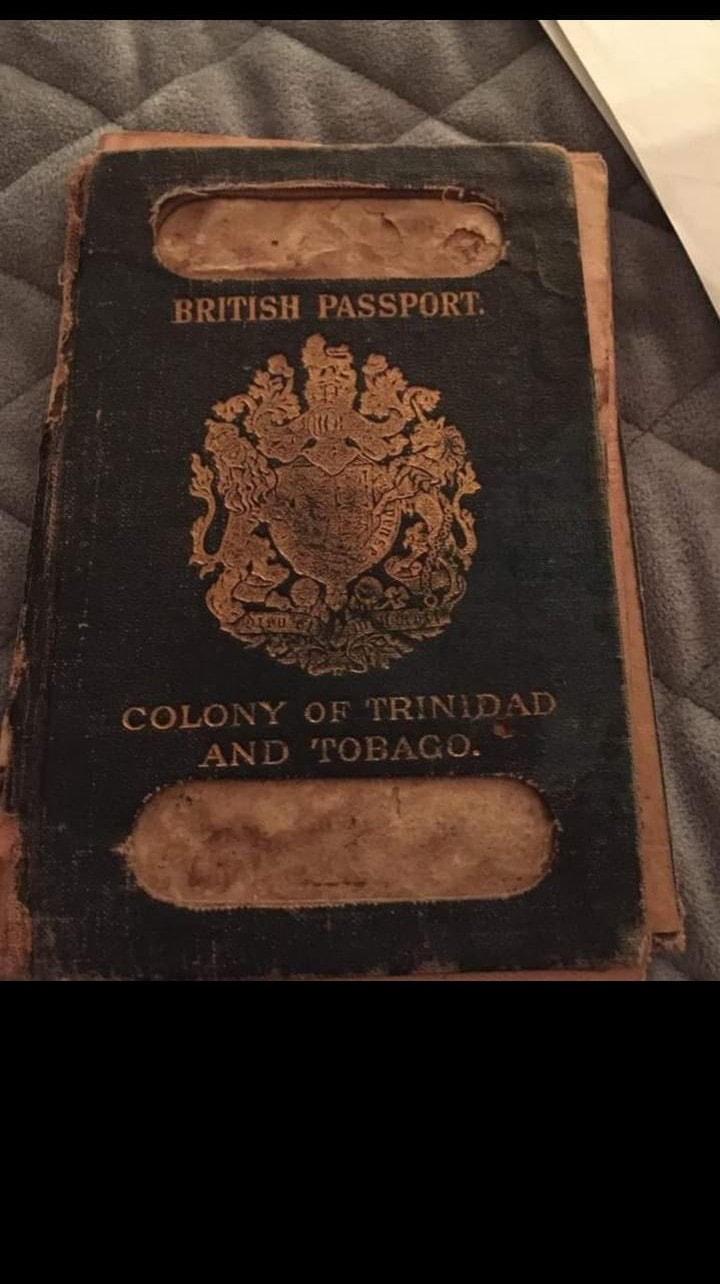


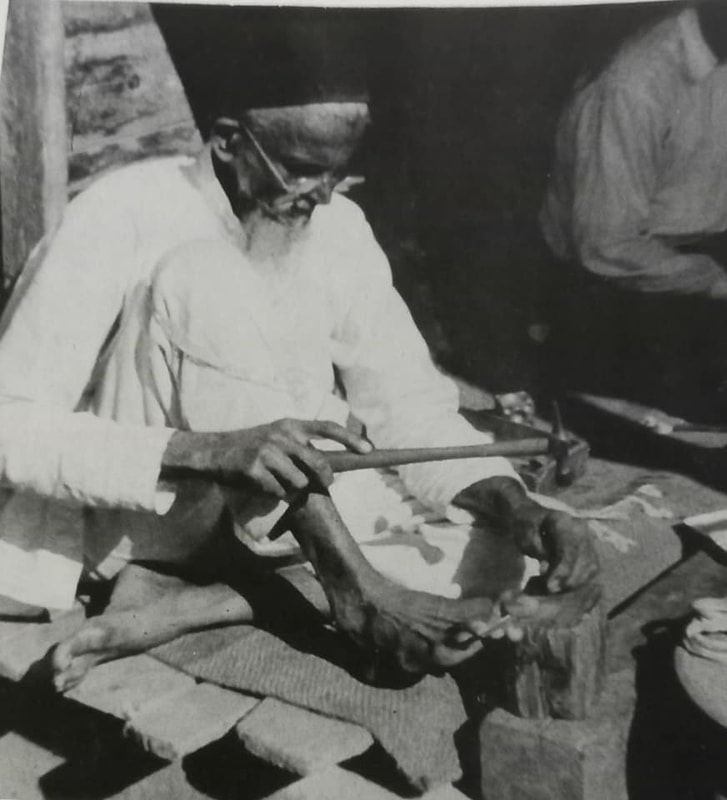
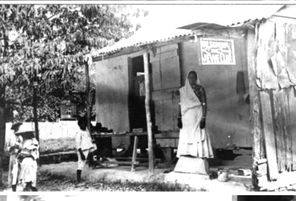
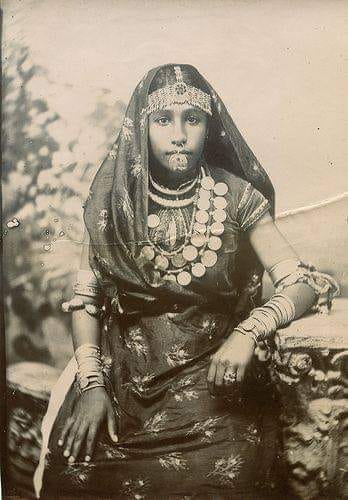
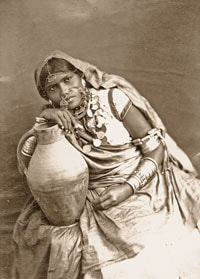
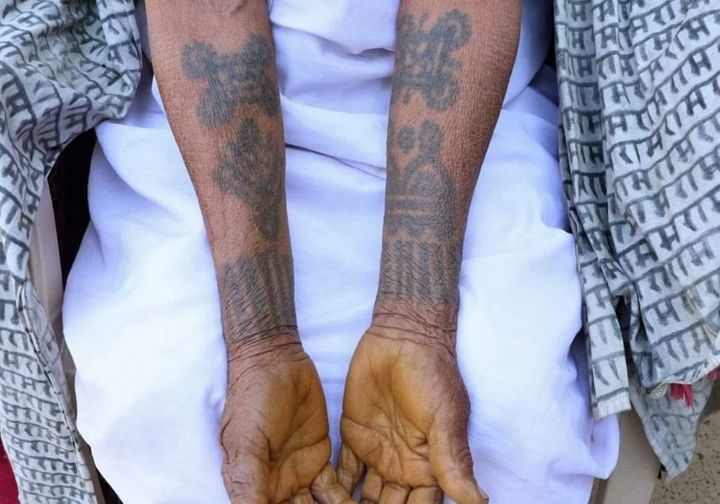





 RSS Feed
RSS Feed